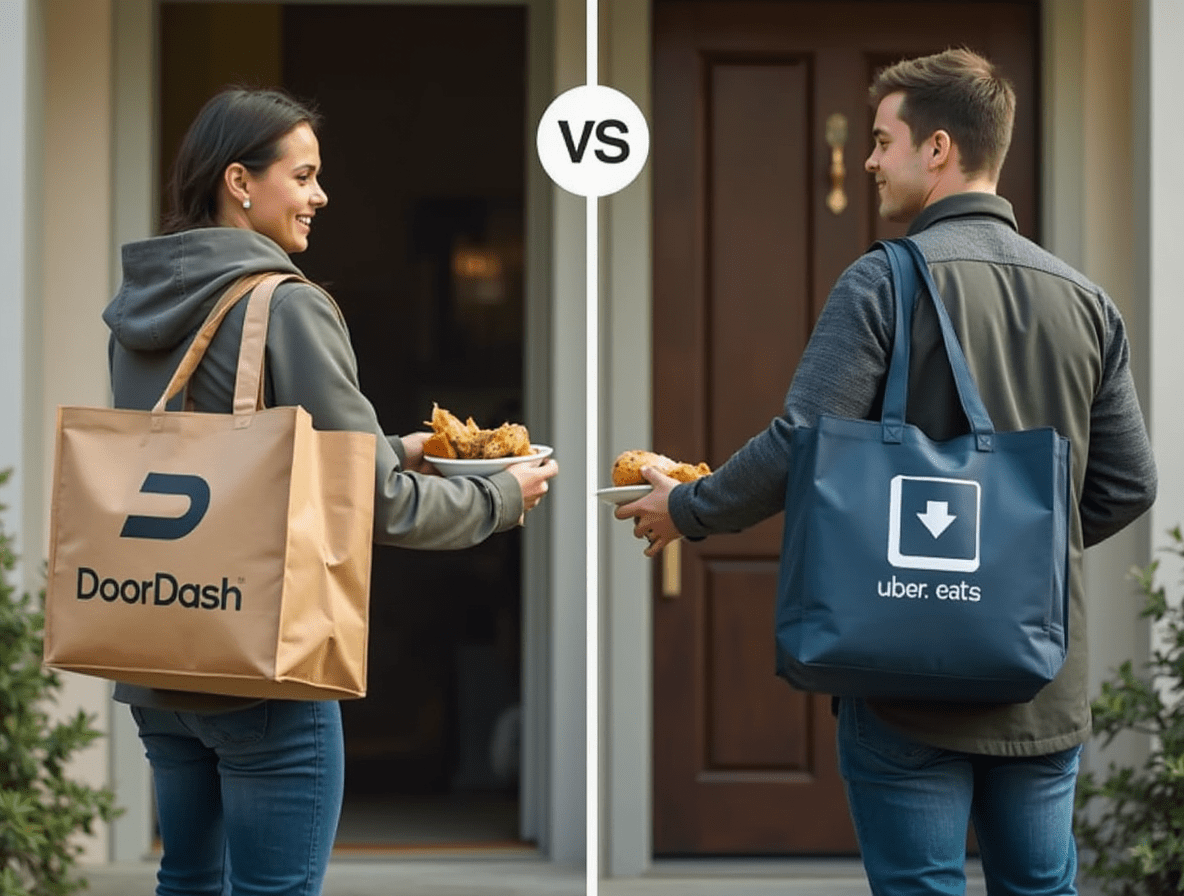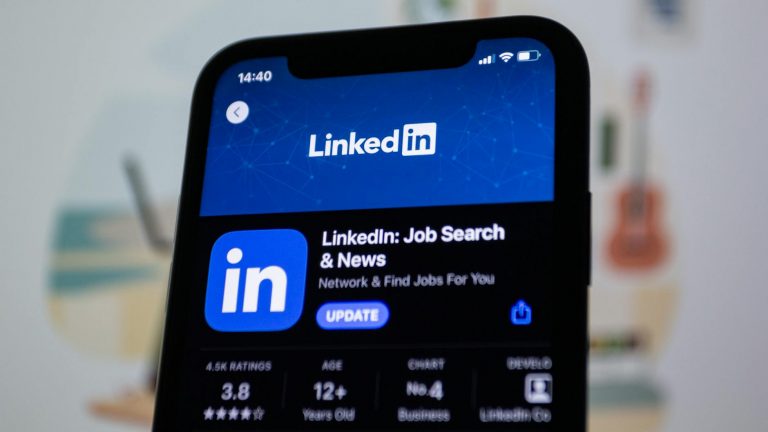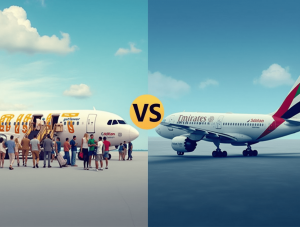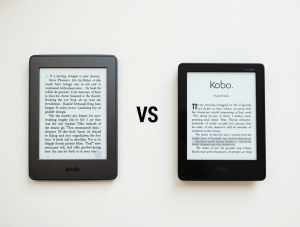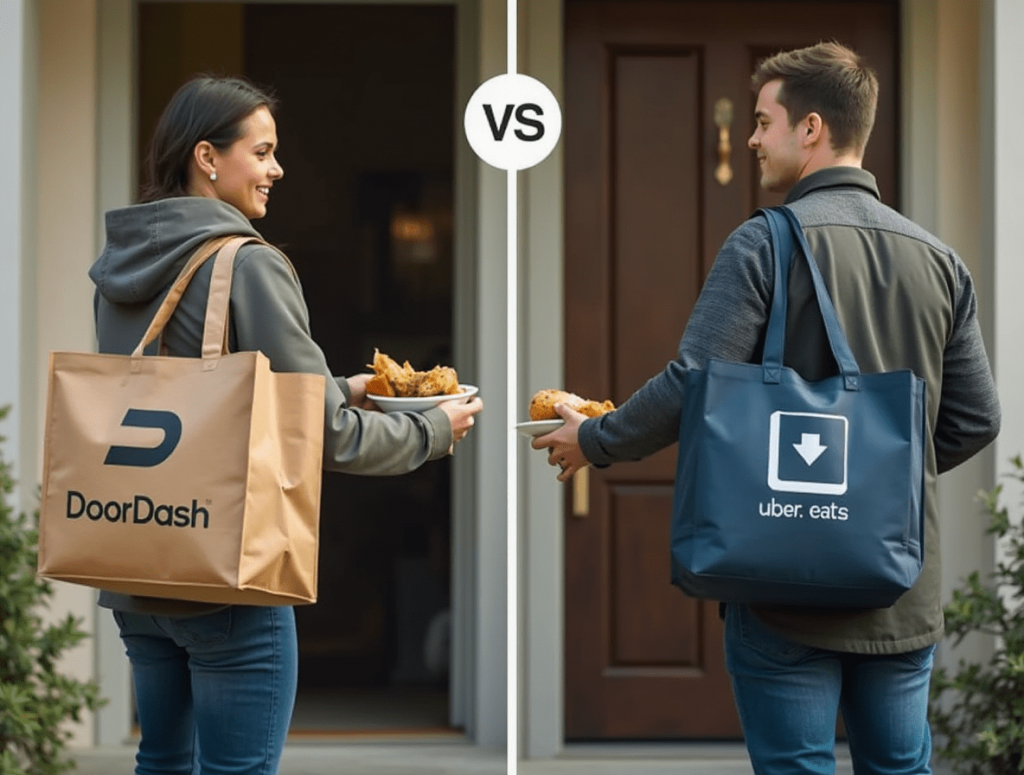
Did you know that Americans now spend over $150 billion annually on food delivery, with the average household ordering takeout 2-3 times per week? As delivery becomes increasingly embedded in our dining habits, choosing the right platform can significantly impact both your wallet and your satisfaction.
For most consumers, the choice often comes down to the two industry giants: DoorDash and Uber Eats. While these platforms may seem similar at first glance, meaningful differences in their pricing structures, restaurant partnerships, service areas, and user experiences can substantially affect your delivery experience.
This comprehensive guide breaks down the key factors that determine which service delivers better value—including fee structures, restaurant selection, delivery times, and customer service—to help you choose the platform that best aligns with your specific food delivery needs and preferences.
Company Backgrounds and Market Positions
DoorDash Overview
Founded in 2013 by Stanford students Tony Xu, Stanley Tang, and Andy Fang, DoorDash has grown to become the market leader in the United States food delivery space.
Key stats:
- Market share: Approximately 65% of U.S. food delivery market (2025)
- Active in 7,000+ cities across North America, Australia, and Japan
- Over 550,000 restaurant partners
- 25+ million monthly active users
- 3.5 million+ “Dashers” (delivery drivers)
DoorDash’s growth strategy has centered on aggressive expansion into suburban markets and forming exclusive partnerships with national restaurant chains.
Uber Eats Overview
Launched in 2014 as an extension of Uber’s ride-sharing platform, Uber Eats has leveraged its parent company’s existing infrastructure to become the second-largest food delivery service in the U.S.
Key stats:
- Market share: Approximately 24% of U.S. food delivery market (2025)
- Active in 6,000+ cities across 45+ countries
- Over 400,000 restaurant partners in the U.S.
- 20+ million monthly active users
- Utilizes both dedicated delivery partners and Uber drivers
Uber Eats has focused on international expansion and integration with the broader Uber ecosystem, including its Uber One membership program that combines benefits across ride-sharing and delivery services.
Pricing and Fee Structures
One of the most significant differentiators between the platforms is their fee structures:
DoorDash Fees
Customer-facing fees:
- Delivery fees: $1.99-$5.99 depending on restaurant distance and demand
- Service fees: 10-15% of order subtotal
- Small order fees: $2.50-$3.50 for orders below minimum thresholds (typically $10-$12)
- Optional tip: Suggested amounts or custom tip
DashPass subscription:
- $9.99/month or $96/year
- Benefits: $0 delivery fees on eligible orders over $12, reduced service fees
- Additional benefits: Member-exclusive promotions, priority customer support
Hidden costs:
- Menu price markup: Some restaurants charge 10-30% higher prices than in-store
- Peak time additional fees: “Busy area” surcharges during high-demand periods
Uber Eats Fees
Customer-facing fees:
- Delivery fees: $0.49-$7.99 based on distance, restaurant, and demand
- Service fees: 15% of order subtotal (typically higher than DoorDash)
- Small order fees: $3 for orders below minimum thresholds (typically $10-$15)
- Optional tip: Suggested amounts or custom tip
Uber One subscription:
- $9.99/month or $99.99/year
- Benefits: $0 delivery fees on eligible orders over $15, 5% off eligible orders
- Additional benefits: Includes Uber ride benefits, member offers
Hidden costs:
- Menu price markup: Similar to DoorDash, varying by restaurant
- Dynamic pricing: More aggressive surge pricing during peak times
Fee Comparison Analysis
A 2024 fee analysis study of 1,000+ identical orders placed on both platforms revealed:
- DoorDash total fees averaged 23% of order subtotal
- Uber Eats total fees averaged 26% of order subtotal
- For small orders (under $15), DoorDash was typically 12% cheaper
- For large orders (over $50), Uber Eats was often 5-7% cheaper due to lower percentage-based service fees
For subscription members:
- DashPass members saved an average of $4-$7 per order
- Uber One members saved an average of $3-$8 per order, with greater savings on larger orders
Restaurant Selection and Exclusivity
The available restaurant selection often drives consumer choice between platforms:
DoorDash Restaurant Partners
DoorDash has prioritized building an extensive restaurant network:
- 550,000+ restaurants across service areas
- Strong representation of national chains
- Notable exclusive partnerships with Cheesecake Factory, Chipotle, and Chick-fil-A
- Better coverage in suburban and smaller markets
- Increasing focus on grocery and convenience store delivery
DoorDash’s “DashMart” virtual convenience stores also provide quick delivery of essential items without restaurant involvement.
Uber Eats Restaurant Partners
Uber Eats features:
- 400,000+ restaurants across U.S. service areas
- Strong representation of independent and local restaurants
- Notable partnerships with Starbucks and McDonald’s
- Better international restaurant selection
- Expanding “Merchant Store” options for non-restaurant retail
Uber Eats has particularly strong coverage in major metropolitan areas, though its suburban presence has grown substantially in recent years.
Market-Specific Differences
Restaurant availability varies significantly by location:
- In the 50 largest U.S. cities, the platforms share approximately 80% of the same restaurants
- In suburban areas, DoorDash typically offers 15-30% more restaurant options
- In smaller markets (under 50,000 population), DoorDash’s selection advantage increases to 30-45%
- In international markets, Uber Eats generally provides superior selection
A 2024 market analysis found that the platform with better restaurant selection varies substantially by city and neighborhood, making it worth checking both services for your specific location.
User Experience and App Functionality
The digital interface significantly impacts customer satisfaction:
DoorDash User Experience
DoorDash’s platform offers:
- Clean, straightforward interface with prominent search functionality
- “DashMart” virtual convenience store integration
- Group ordering features with individual payment options
- Scheduled deliveries up to 7 days in advance
- Real-time delivery tracking with GPS map view
- More detailed restaurant information and menus
DoorDash’s app received an average rating of 4.7/5 on iOS and 4.5/5 on Android in 2025 reviews.
Uber Eats User Experience
Uber Eats’ platform features:
- Integration with broader Uber ecosystem
- More powerful search filters and customization options
- Better international language support
- Restaurant ratings system with more detailed reviews
- Simpler reordering of previous meals
- More accurate delivery time estimates
Uber Eats’ app received an average rating of 4.6/5 on iOS and 4.4/5 on Android in 2025 reviews.
Distinctive Features Comparison
DoorDash unique features:
- “DashPass Pickup” with prioritized service at restaurants
- “Nationwide Shipping” for specialty items from famous restaurants
- More robust group ordering capabilities
- “DoorDash for Work” corporate ordering programs
Uber Eats unique features:
- Voice ordering through virtual assistants
- More sophisticated dietary preference filters
- Family profiles for shared payment methods
- Direct integration with Uber rides (like ordering food to arrive when you get home)
User experience testing in 2024 found DoorDash’s interface more intuitive for new users, while Uber Eats offered more customization options preferred by power users.
Delivery Performance and Reliability
Actual delivery execution represents perhaps the most critical factor:
DoorDash Delivery Performance
DoorDash’s delivery metrics based on 2024-25 performance data:
- Average delivery time: 35 minutes
- On-time delivery rate: 91%
- Order accuracy: 94%
- Driver availability during off-peak hours: Higher than industry average
- Weather condition performance: More likely to remain operational during minor weather events
DoorDash employs a time-slot scheduling system for drivers that helps maintain service levels even during non-peak hours.
Uber Eats Delivery Performance
Uber Eats’ delivery metrics:
- Average delivery time: 37 minutes
- On-time delivery rate: 89%
- Order accuracy: 93%
- Driver availability during off-peak hours: More variable
- Weather condition performance: More likely to implement surge pricing during weather events
Uber Eats leverages its ride-sharing driver network during peak times, which can increase driver availability during high-demand periods.
Performance Variations by Market
Delivery performance varies significantly by location:
- In dense urban areas, Uber Eats often delivers 5-7 minutes faster
- In suburban and rural areas, DoorDash typically delivers 8-10 minutes faster
- During peak dinner hours (6-8 PM), DoorDash maintains more consistent delivery times
- During late night hours, Uber Eats typically offers better availability
Independent market testing in 2025 found that DoorDash delivered more consistently across varied conditions, while Uber Eats performed better in optimal circumstances but showed more performance variance.
Customer Service and Problem Resolution
How platforms handle issues significantly impacts the overall service experience:
DoorDash Customer Service
DoorDash’s support system includes:
- In-app chat support
- Email support
- Limited phone support
- Average response time: 2-4 minutes for chat, 1-2 hours for email
- Refund processing time: Typically 3-5 business days
DoorDash’s refund policy generally covers missing items, significantly delayed deliveries, and quality issues with automatic refunds for certain common problems.
Uber Eats Customer Service
Uber Eats’ support channels include:
- In-app support with more robust help topics
- 24/7 phone support for Uber One members
- Email support
- Average response time: 3-6 minutes for chat, 2-4 hours for email
- Refund processing time: Typically 1-3 business days
Uber Eats offers more generous refund policies for most issues, with faster processing times but slightly slower initial response rates.
Satisfaction Comparison
Customer satisfaction surveys conducted in 2025 showed:
- Overall satisfaction: DoorDash 87%, Uber Eats 84%
- Issue resolution satisfaction: DoorDash 78%, Uber Eats 81%
- First-contact resolution rate: DoorDash 74%, Uber Eats 69%
While DoorDash scored higher on overall satisfaction, Uber Eats customers reported higher satisfaction with how issues were ultimately resolved when problems occurred.
Driver Experience and Ethics
The treatment of delivery drivers affects service quality and ethical considerations:
DoorDash Driver Model
DoorDash’s “Dasher” program features:
- Independent contractor model
- More structured scheduling options
- “Top Dasher” program with incentives for high-performing drivers
- Average earnings: $18-25/hour before expenses
- More transparent tipping system (after previous controversies)
Recent driver satisfaction surveys showed 67% satisfaction among active Dashers.
Uber Eats Driver Model
Uber Eats’ delivery partner structure includes:
- Independent contractor model
- Flexible on-demand scheduling
- Integration with Uber ride-sharing opportunities
- Average earnings: $17-24/hour before expenses
- More opportunities in urban centers
Driver satisfaction surveys indicated 65% satisfaction among active Uber Eats couriers.
Ethical Considerations
Both companies have faced scrutiny over their labor practices:
- DoorDash implemented more driver-friendly policies after public pressure in 2023
- Uber Eats provides more driver benefits in certain markets with regulatory requirements
- Both companies have introduced programs for driver safety and security
When surveyed, 62% of consumers indicated that driver treatment influences their platform choice, though most prioritize personal experience factors.
Geographic Coverage and Availability
Service availability represents a fundamental consideration:
DoorDash Coverage
DoorDash’s service footprint includes:
- 7,000+ cities across North America
- All 50 U.S. states
- Stronger presence in suburban and rural markets
- Growing international presence in Australia, Canada, and Japan
- More consistent suburban and rural coverage
DoorDash has focused on expanding into smaller markets where competition is limited.
Uber Eats Coverage
Uber Eats operates in:
- 6,000+ cities globally
- 45+ countries
- Stronger urban market coverage
- More comprehensive international presence
- Growing suburban expansion
Uber Eats leverages its ride-sharing infrastructure to maintain driver coverage in its service areas.
Market-Specific Availability
Coverage quality varies by location:
- In the top 100 U.S. metro areas, both services offer comparable coverage
- In markets ranked 101-500 by population, DoorDash typically provides more restaurant options
- In rural areas, DoorDash generally offers service in more locations
- Internationally, Uber Eats dominates in Europe, Latin America, and parts of Asia
Coverage should be evaluated specifically for your home and work locations, as neighborhood-level differences can be substantial.
Loyalty Programs and Rewards
Both platforms offer incentives for regular customers:
DoorDash Rewards
DoorDash’s loyalty structure includes:
- DashPass subscription ($9.99/month)
- Order credits for late deliveries
- Loyalty points convertible to DoorDash credits
- Partner promotions with credit cards and retail programs
- Special member-only offers and discounts
DashPass members report an average savings of $4-$7 per order, with the subscription becoming valuable at 2-3 orders monthly.
Uber Eats Rewards
Uber Eats’ loyalty programs include:
- Uber One membership ($9.99/month)
- Integration with Uber ride-sharing rewards
- More frequent promotional offers
- Partner benefits with Uber-affiliated companies
- Bank and credit card partnership promotions
Uber One members report average savings of $3-$8 per order, with additional value derived from ride-sharing benefits.
Promotional Differences
Promotional strategies differ significantly:
- DoorDash offers more consistent, smaller discounts
- Uber Eats features more aggressive limited-time offers
- DoorDash provides more targeted promotions based on order history
- Uber Eats offers better new customer incentives
For occasional users, Uber Eats’ promotional strategy often provides better immediate value, while DoorDash’s approach rewards consistency.
Specialized Dietary and Preference Options
Meeting specific dietary needs represents an increasingly important differentiator:
DoorDash Dietary Features
DoorDash’s options include:
- Basic dietary filters (vegetarian, vegan, gluten-free)
- Allergen information when provided by restaurants
- Customization options for specific items
- “Healthy” restaurant category
- Less robust ingredient-level filtering
The platform’s dietary preference features earn a 3.5/5 rating from food allergy advocacy groups.
Uber Eats Dietary Features
Uber Eats offers:
- More detailed dietary preference settings
- More granular allergen filtering
- Better display of ingredient information
- “Mindful Eating” collections
- Calorie information when available
The platform’s dietary tools receive a 4.2/5 rating from food allergy advocacy groups.
Special Needs Comparison
For specific dietary requirements:
- Vegetarian/vegan options: Both platforms offer comparable filtering
- Food allergies: Uber Eats provides more comprehensive tools
- Health-conscious options: Uber Eats offers better nutrition information
- Religious dietary restrictions: Similar capabilities on both platforms
Customers with serious food allergies or strict dietary requirements consistently report better experiences with Uber Eats’ more detailed filtering system.
Additional Services and Features
Both platforms have expanded beyond restaurant delivery:
DoorDash Expanded Services
DoorDash’s additional offerings include:
- Grocery delivery from major chains
- DashMart virtual convenience stores
- Alcohol delivery (where legally permitted)
- Pet supplies
- Retail partnerships with stores like Walgreens and Sephora
- Gift sending capabilities
The company has positioned itself as a broader “delivery marketplace” rather than just a food delivery service.
Uber Eats Expanded Services
Uber Eats’ extended services encompass:
- Grocery delivery with real-time shopping
- Convenience store partnerships
- Alcohol delivery (where legally permitted)
- Pharmacy deliveries
- Flower and gift delivery options
- Package pickup and delivery integration with Uber services
Uber Eats has more deeply integrated these additional services with its core ride-sharing business.
Non-Restaurant Delivery Comparison
For non-restaurant deliveries:
- Grocery selection: DoorDash offers more partner stores
- Grocery shopping experience: Uber Eats provides better real-time communication
- Convenience items: DoorDash’s DashMart offers better selection
- Alcohol delivery: Uber Eats available in more markets
- Retail partnerships: DoorDash offers more variety
Both platforms continue expanding these alternative delivery categories, which represent the fastest-growing segments of their businesses.
Conclusion: Which Service is Better?
The determination of which service is “better” doesn’t yield a universal answer. Instead, the superior choice depends on:
- Your specific location and the local restaurant partnerships
- Typical order size and frequency
- Dietary preferences and needs
- Price sensitivity versus service priorities
- Membership in related programs (like Uber ride-sharing)
DoorDash typically offers better value for:
- Suburban and smaller market residents
- Frequent orderers who benefit from DashPass
- Those who value consistency in delivery times
- Customers prioritizing restaurant selection breadth
- Group orders and family meals
Uber Eats generally provides better service for:
- Urban dwellers in major metropolitan areas
- International travelers seeking familiar interfaces
- Customers with specific dietary restrictions
- Those who already use Uber for transportation
- Customers seeking more robust order customization
Many consumers maintain both apps and select between them based on specific ordering circumstances, current promotions, and restaurant availability. This strategy maximizes choice while taking advantage of the competitive dynamics between the platforms.
As both services continue expanding their offerings and geographical footprints, regularly reassessing their performance in your specific location can help ensure you’re getting the best possible value and service for your food delivery needs.
FAQ Section
Do restaurants charge higher prices on these delivery platforms?
Yes, many restaurants set menu prices 10-30% higher on delivery platforms compared to in-store pricing to offset commission fees. This practice is more common on both DoorDash and Uber Eats than many consumers realize. Some restaurants maintain consistent pricing across channels, but most implement some level of markup, which varies by establishment rather than by delivery platform.
How do the subscription services compare in terms of value?
DashPass ($9.99/month) provides better value for frequent, smaller orders with its $12 minimum for free delivery, while Uber One ($9.99/month) offers better value for larger orders and those who also use Uber’s ride-sharing services. For food delivery only, DashPass typically breaks even at 2-3 orders per month, while Uber One requires 2-4 orders depending on size. The combined ride-share benefits make Uber One more compelling for transportation users.
Which service is better for drivers/delivery people?
Independent analyses show similar average hourly earnings ($18-25/hour before expenses) on both platforms, but with different advantages. DoorDash offers more predictable scheduling and earning potential through its time slot system, while Uber Eats provides more flexibility and the ability to combine food delivery with passenger rides in some markets. Driver satisfaction surveys show slightly higher satisfaction with DoorDash (67%) compared to Uber Eats (65%).
How do these services handle tipping?
Both platforms now pass 100% of tips to drivers after previous controversies. DoorDash suggests tips before placing orders based on order size and distance (typically 15-20% of order subtotal). Uber Eats allows tipping before or after delivery with similar percentage suggestions. Both services have seen average tips increase to approximately 15% of order subtotals in 2025, up from 12% in 2023.
What about data privacy considerations between the platforms?
Both companies collect extensive user data, but with different privacy approaches. DoorDash’s privacy policy allows more targeted marketing and data sharing with restaurant partners. Uber Eats, operating under Uber’s broader privacy framework, collects more comprehensive location data that integrates with its transportation services. Both offer opt-out options for certain data uses, though these can be difficult to locate in app settings.





